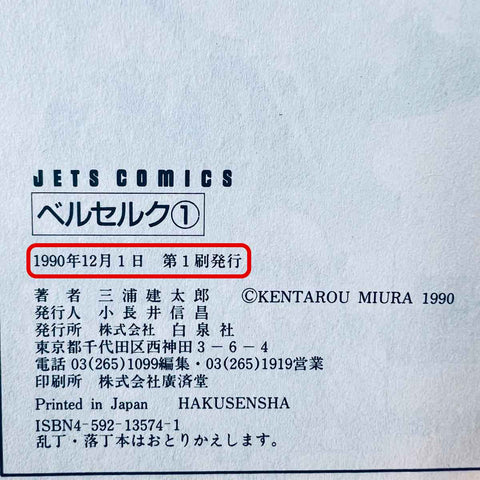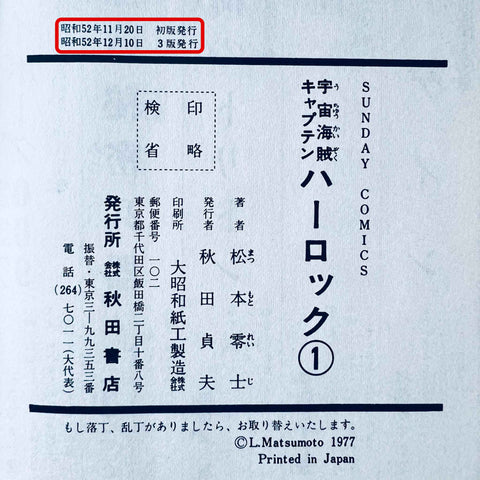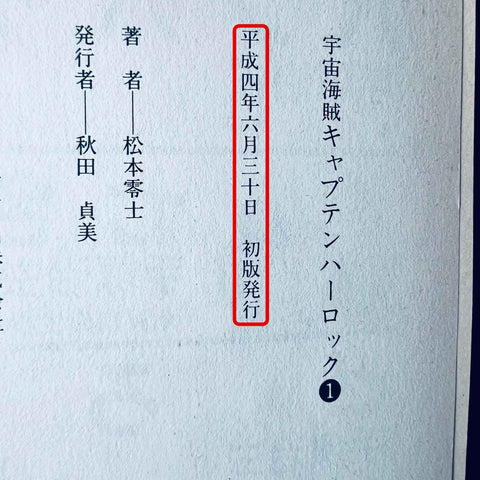What is a First Print Book and How to Recognize?
In the realm of collectibles, especially in the world of comics, books, and limited edition prints, the term "First Print" holds significant allure and value. But what exactly does it entail?
A "First Print" refers to the initial batch of copies produced for a particular item, whether it's a comic book, a novel, or an art print. These copies are the very first to roll off the presses, often representing the purest form of the work as envisioned by its creators. They hold a special place in the hearts of collectors for several reasons:
-
Authenticity: First prints are the closest you can get to the original release. They capture the essence of the work without any subsequent alterations or modifications that might occur in later print runs.
-
Historical Significance: Owning a first print means owning a piece of history. It's a tangible connection to the initial release and the cultural context surrounding it.
-
Collectible Value: As the earliest editions, first prints are typically the most sought-after by collectors. Their scarcity, combined with their historical and cultural significance, often results in increased value over time.
-
Potential Investment: While we can't predict the future, first prints of iconic works have a track record of appreciating in value, making them not just a passion but also a potential investment opportunity.
At 1stPrint.net, I take pride in curating a selection of first prints across various genres, ensuring that collectors have access to these prized editions. Whether you're a seasoned collector looking to expand your portfolio or a newcomer eager to start your collection, explore my range of first prints and unlock the magic of owning a piece of history.
How to recognize a First Print book?
First and foremost, it's important to note that the Japanese date system is always displayed in the following format: "Year, Month, Day."
To ascertain whether a copy is a first edition, you need to locate the page where the printing date is indicated and verify the following:
If "第1刷発行" is stated, it denotes a First Print.
If somethings like "第3版発行" is mentioned, then it indicates a third print.
But the date of the First Print should always be mentioned above or beside it.
Let's see with real pictures examples to understand it :

"Berserk" Volume 1 First Print Manga

"Captain Harlock" Volume 1 Third Print Manga
It is important to understand how the Japanese dating sytem works too.
The Japanese dating system is based on the reigns of the emperors. Here are the main eras used in modern Japan:
-
Showa Era 昭和 (1926-1989): The Showa Era commenced with the reign of Emperor Hirohito. It covers the pre-World War II period, World War II itself, and the post-war reconstruction of Japan. Showa is often associated with Japan's militarism and expansionism during the war.
-
Heisei Era 平成 (1989-2019): The Heisei Era began with the reign of Emperor Akihito. It is characterized by economic growth, technological advancements, and significant social changes in Japan. This era saw Japan's economy become one of the largest in the world.
-
Reiwa Era 令和 (2019-present): The Reiwa Era started with the ascension of Emperor Naruhito to the throne. Reiwa means "beautiful harmony" in Japanese and is seen as a symbol of hope and renewal. It is still ongoing as of now.
In the Japanese dating system, years are often referred to by the name of the era followed by the year within that era. For example, "Heisei 30 (平成30)" refers to the 30th year of the Heisei Era, which corresponds to 2018 in the Gregorian calendar. This system is commonly used in official documents, newspapers, and other formal contexts in Japan.
Let's see some examples with pictures of First Print books with this dating system:

"Baki" Manga use Heisei dating system (平成12 = 2000)

"Captain Harlock - Deluxe Edition" use the japanese number system
平成四年六月三十日 (Heisei 4, June, 30th)
I hope that these explanations have been helpful to you.
So, are you looking for a particular series? You're in the right place!
